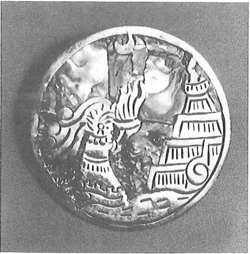
QASAVARA The people of Bangka Island in Melanesia have a rather distasteful view of the afterlife. Their belief is that damned souls end up as food for dragons, DEMONS, and ogres. The cruel cannibal spirit Qasavara gathers the dead and serves them to mythical monsters, and the condemned spend eternity in the bowels of the beasts.
QUETZALCOATL Quetzalcoatl is the ruler of the Toltec-Aztec underworld, a place known as the “land where only the feathered serpent knows no fear.” The Aztecs (who inherited this CHTHONIC deity from the ancient Maya) had nine gods of the underworld, including the fearsome Quetzalcoatl, a winged snake who lurks in the dark places of the dead. He is the overlord of the gods as well as of all mortals, and his thirst for blood can be satisfied only with human sacrifices. His kingdom includes the World of Shadows, a murky realm of bitter gloom. He is associated with the number 7 and with the morning star (an affiliation that led Christian missionaries to connect Quetzalcoatl with LUCIFER, referred to in religious texts as “son of the morning star”).

Silver and abalone brooch depicting a ritual for Quetzalcoatl.
QUEVEDO, FRANCISCO GOMEZ DE Spanish baroque author Francisco Gomez de Quevedo y Villegas (1580–1645) spent the better part of his career composing satirical poems and novels denouncing the hypocrisy of Spain’s “moralistic” society. His most stinging work, Visions, written in 1627, presents a variety of fantasies set in heaven and hell that expose the corruption of Spanish clergy, the cruelty of the aristocracy, and the indifference of the monarchy. Quevedo’s motif of making salvation and damnation interchangeable in a self-absorbed culture bears similarities to George Bernard Shaw’s play MAN AND SUPERMAN, which likewise calls into question the traditional criteria for afterlife judgment.